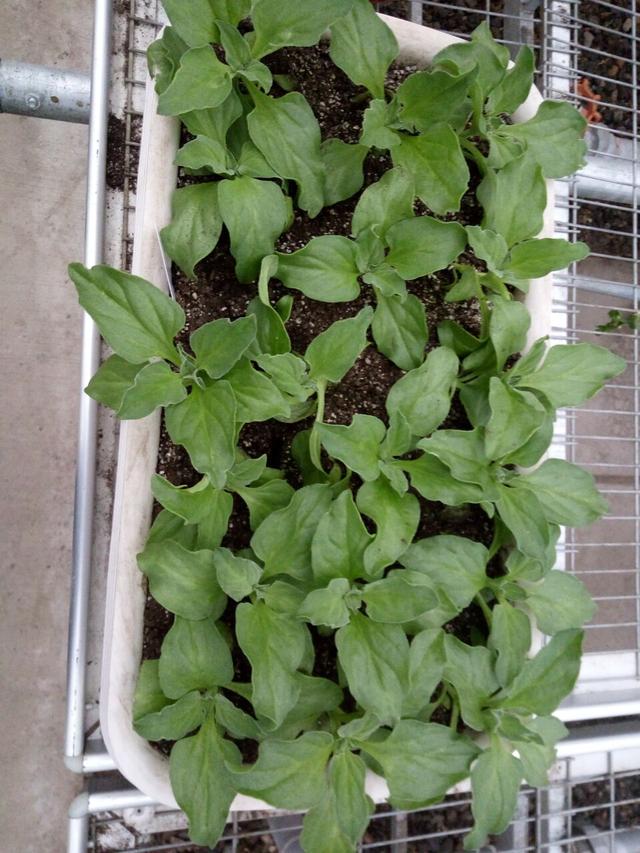Planting methods of potted ice vegetables
Ice vegetable, also known as wheatgrass, is native to South Africa, is a kind of saline-alkali plant, can grow on the coast, because its cell liquid contains salt, so that the plant itself also has a slightly salty taste, it is precisely because the plant surface is covered with a layer of plant salt to make it look like ice crystals, so it is called ice vegetable, because it belongs to succulent plants, the leaves themselves are thick, can firmly lock in water, edible taste fresh and crisp. It is a common dish in French cuisine. Ice vegetables like warm and humid climate, the growth temperature is 20 to 25 ℃, the growth cycle is about half a year, soil cultivation or hydroponic cultivation can grow, it is very easy to manage.

Ice vegetable potted plant
Pot planting of Ice Cabbage
1. Seed selection: select the dry, full and glossy seeds produced in the same year.
2. Raising seedlings: choose a 50-hole or 72-hole seedling plate to install peat soil as a spare, then put the ice cabbage seeds on the seedling tray with 2-3 seeds in each hole, then apply a layer of vermiculite on its surface and lay it flat on the seedling bed to spray water through the water wheel or horticultural sprinkler to keep the temperature in the shed at 20-30 degrees. The seedlings will break the soil in about 3 days, and they can be transplanted into the pot after they grow to 40 days or so.
3. On the basin: select high-quality peat soil rich in organic matter and fully fermented bio-organic fertilizer to stir evenly, put it into a basin prepared in advance to pour water thoroughly, and then transplant the ice cabbage seedlings into the basin, keep 18 plants in the large basin and 8 plants in the small pot. it is necessary to choose seedlings of similar size to prevent the interaction between seedlings caused by their different sizes.
4. Maintenance: first of all, spray the leaf surface with 5% chlorpromazine and 8% Pulick diluted 2500 times to prevent the occurrence of blight and quenching disease. After a week or so in the pot, you can spray balanced Poly abundant foliar fertilizer. You can water it every ten days or so.
5. Harvest: about 40 days after putting on the pot, the cabbage seedlings can be harvested after the pot is full, that is, they can be harvested all at once, or only the lateral buds can be harvested many times, depending on the individual situation.

Ice cabbage seedling
The eating method of ice vegetables
Ice vegetables taste delicate without residue, crisp and juicy, which can be best understood by eating raw. In addition, some restaurants put raw ice vegetables on ice to make them taste cooler. In addition to eating raw, it can also scald the cold salad with hot water, boil it, stir-fry it, and make soup.

Iced vegetable
Nutritional value of Ice Cabbage
Anti-aging substances containing natural malic acid, sodium, potassium, carotene and amino acids are a kind of vegetables with high nutritional value.

Ice vegetable potted plant
The efficacy and function of ice vegetables
1. Low sodium: ice cabbage contains natural plant salt, which is very suitable for middle-aged and elderly people as well as patients with hypertension.

Ice vegetable potted plant
2. Prevention of diabetes
In addition to low sodium salt, ice vegetables also contain a variety of amino acids, which can slow down the aging rate of cells and strengthen the function of brain cells, so mental workers and young students can also eat more ice vegetables at ordinary times. In addition, ice cabbage also contains flavonoids, which is a natural polyphenol compound, which can prevent diabetes.
- Prev

How to plant green pineapple indoors?
Green pineapple is a large evergreen herbaceous vine, evergreen all the year round, often climbing on rocks and tree trunks, with branches growing to several meters. The green radish branch is long leaf green, and has good.
- Next

Planting and management of potted jujube
Guobang (WeChat: shuiguobangv) introduces a variety of potted techniques such as fruits and flowers, as well as a variety of household ideas. We advocate green and ecological.
Related
- Fuxing push coffee new agricultural production and marketing class: lack of small-scale processing plants
- Jujube rice field leisure farm deep ploughing Yilan for five years to create a space for organic food and play
- Nongyu Farm-A trial of organic papaya for brave women with advanced technology
- Four points for attention in the prevention and control of diseases and insect pests of edible fungi
- How to add nutrient solution to Edible Fungi
- Is there any good way to control edible fungus mites?
- Open Inoculation Technology of Edible Fungi
- Is there any clever way to use fertilizer for edible fungus in winter?
- What agents are used to kill the pathogens of edible fungi in the mushroom shed?
- Rapid drying of Edible Fungi

